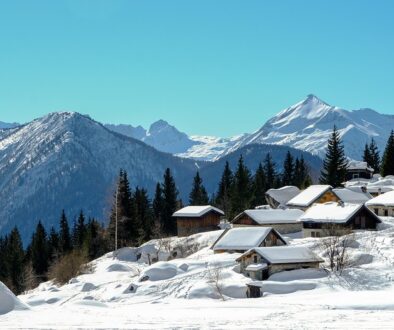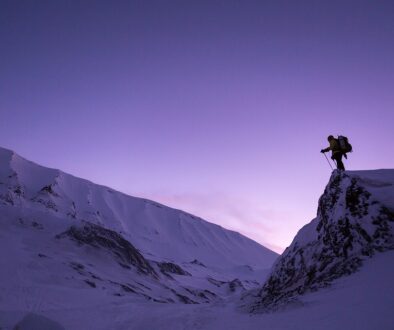Capturing Wilderness: The Art of Nature Photography
Article by: Suzette Morshead
Nature has a way of mesmerizing us, drawing us into its vastness and complexity. With every sunrise, every rustle of leaves, and every distant mountain peak, it tells a story that begs to be captured. For many, nature photography is more than just a hobby; it’s a passion and a means of expressing the beauty of our world. In this article, we will explore the art of nature photography, the techniques that can elevate your images, and the deep connection it fosters with the wilderness.
Understanding Nature Photography
At its core, nature photography is about observing and documenting the natural world. It encompasses everything from sweeping landscapes to intimate close-ups of flora and fauna. The beauty of this genre lies in its diversity; photographers can explore vast fields, dense forests, serene lakes, and rugged mountains, each offering unique opportunities to capture striking images.
The Elements of Great Nature Photography
-
Light: The quality of light can dramatically change the mood of a photograph. Golden hour—just after sunrise or before sunset—offers soft, warm lighting that enhances colors and textures.
-
Composition: The arrangement of elements within the frame is crucial. Techniques like the rule of thirds, leading lines, and framing can guide the viewer’s eye and create a more impactful image.
-
Perspective: Don’t hesitate to experiment with different angles and focal lengths. Sometimes, getting low to the ground or climbing to a higher vantage point can reveal stunning perspectives that elevate your photographs.
-
Patience: Nature is unpredictable. Wildlife may not appear when expected, or weather conditions may shift rapidly. A patient photographer learns to wait and be ready for that perfect moment.
- Respect for Nature: Ethical photography is fundamental. Always respect wildlife and their habitats, ensuring that your presence does not disturb or harm them.
Personal Journey: My First Encounter with Nature Photography
My journey into nature photography began unexpectedly during a hiking trip in the breathtaking landscapes of the Pacific Northwest. I had embarked on a week-long trek through the Olympic National Park, eager to disconnect from the hustle and bustle of city life and reconnect with nature. I had never considered myself a photographer; my smartphone photos sufficed for sharing moments on social media.
One misty morning while hiking along the Hoh Rainforest Trail, I stumbled upon a tranquil clearing. The thick canopy above allowed only specks of light to dance on the forest floor, creating an ethereal atmosphere. Intrigued, I pulled out my smartphone and began snapping pictures, trying to capture the magic of the scene.
As I looked through my lens, I became acutely aware of the details surrounding me: the lush green ferns, the intricate patterns of the bark on ancient trees, and the delicate web spun by a diligent spider. Each photo I took felt like a labor of love, as I sought to encapsulate the mood and essence of the forest.
That day, I experienced a transformation; I discovered not only the artistry of photography but also the profound connection it fosters with nature. I learned to see the world differently, not just as a passive observer but as an active participant, engaging with my environment through my lens.
Techniques for Capturing Wilderness
With my newfound appreciation for nature photography, I took the time to educate myself on techniques that could help me improve my skills. Here are some key approaches I adopted:
Invest in Quality Equipment
While it’s possible to capture stunning images with a smartphone, investing in a quality DSLR or mirrorless camera can offer greater flexibility and image quality. Explore various lenses to capture everything from landscapes to wildlife.
Explore Post-Processing
Editing is an integral part of photography. Software like Adobe Lightroom or Photoshop allows you to enhance colors, contrast, and sharpness. With careful editing, you can transform a good photograph into a stunning work of art.
Join a Community
Connecting with other photographers can be incredibly enriching. Local photography clubs, online communities, or social media groups provide support, feedback, and inspiration. Sharing experiences and learning from each other can accelerate your growth as a photographer.
Schedule Regular Outings
Practice is key in any art form. Set a schedule for outdoor excursions, even if they are just short walks in a local park. The more time you spend in nature, the more adept you will become at capturing its fleeting moments of beauty.
The Impact of Nature Photography
Beyond expanding personal creativity, nature photography can ignite a passion for conservation. As photographers immerse themselves in natural settings, they often become advocates for preserving these environments. Capturing the majesty of a pristine landscape or the delicate beauty of an endangered species can elevate awareness about the importance of protecting our planet.
Conclusion
Capturing wilderness through photography is an art form that invites us to pause and appreciate the beauty around us. My personal journey from a casual observer to an enthusiastic nature photographer opened my eyes to the intricacies of our environment and the messages it conveys. With each click of the shutter, photographers not only create stunning images but also forge a deeper connection to nature.
Whether you’re a novice or a seasoned photographer, get outside, explore, and let the beauty of the wild inspire you. As you capture each moment, remember that you are not just taking pictures but rather telling a story—one that deserves to be shared with the world. Let your journey into nature photography be a celebration of life, beauty, and the wild.
Capturing Wilderness: The Art of Nature Photography
Article by: Suzette Morshead


